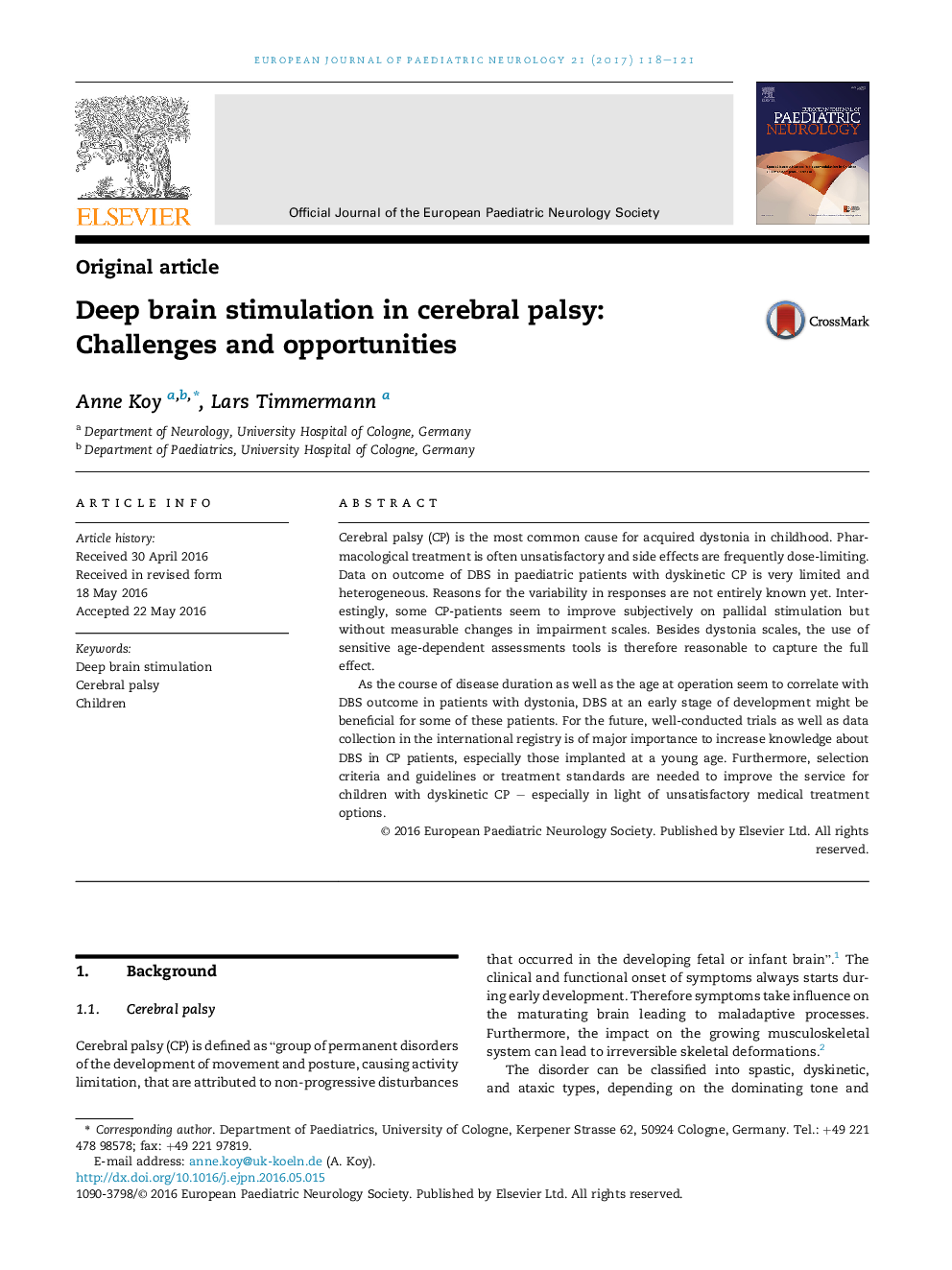| کد مقاله | کد نشریه | سال انتشار | مقاله انگلیسی | نسخه تمام متن |
|---|---|---|---|---|
| 5628923 | 1580002 | 2017 | 4 صفحه PDF | دانلود رایگان |
- Outcome data of DBS in children with dyskinetic CP is limited and heterogeneous.
- Sole use of dystonia scales does not capture the full effect of DBS.
- DBS at an early stage of development might be beneficial for some CP patients.
- Establishing eligibility criteria helps to improve DBS management of children.
- Data on DBS in children should be documented in an international registry.
Cerebral palsy (CP) is the most common cause for acquired dystonia in childhood. Pharmacological treatment is often unsatisfactory and side effects are frequently dose-limiting. Data on outcome of DBS in paediatric patients with dyskinetic CP is very limited and heterogeneous. Reasons for the variability in responses are not entirely known yet. Interestingly, some CP-patients seem to improve subjectively on pallidal stimulation but without measurable changes in impairment scales. Besides dystonia scales, the use of sensitive age-dependent assessments tools is therefore reasonable to capture the full effect.As the course of disease duration as well as the age at operation seem to correlate with DBS outcome in patients with dystonia, DBS at an early stage of development might be beneficial for some of these patients. For the future, well-conducted trials as well as data collection in the international registry is of major importance to increase knowledge about DBS in CP patients, especially those implanted at a young age. Furthermore, selection criteria and guidelines or treatment standards are needed to improve the service for children with dyskinetic CP - especially in light of unsatisfactory medical treatment options.
Journal: European Journal of Paediatric Neurology - Volume 21, Issue 1, January 2017, Pages 118-121
